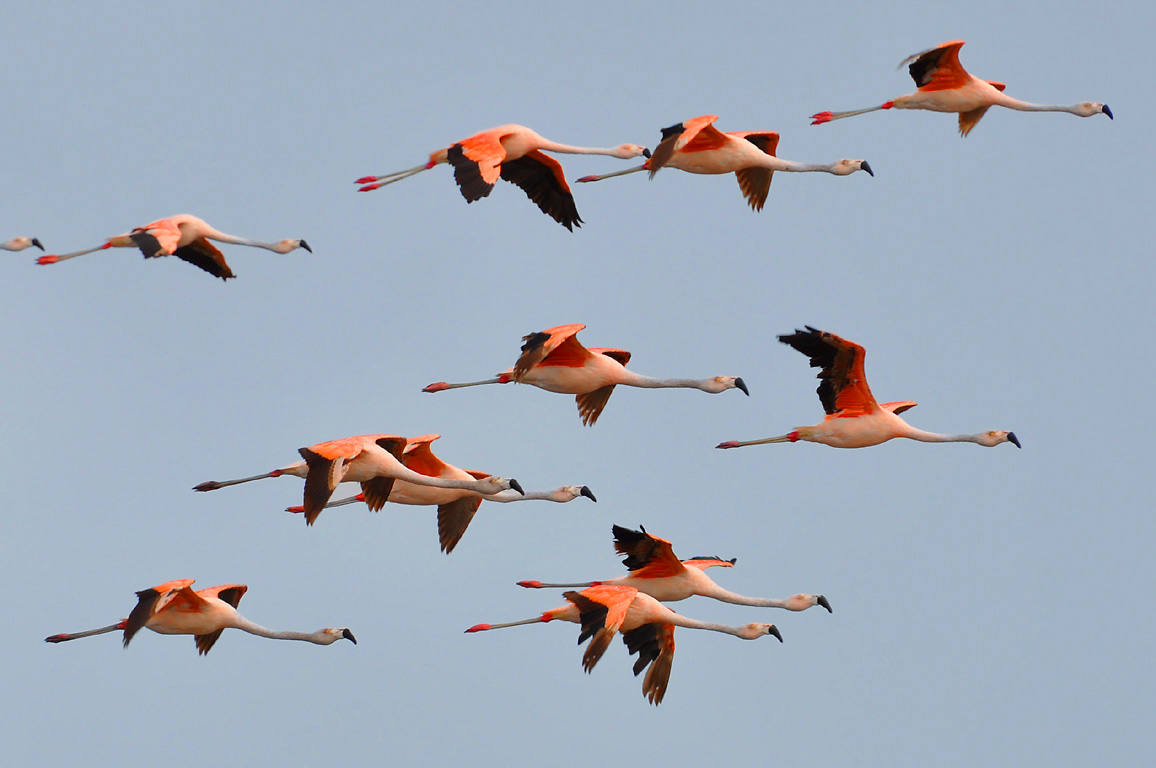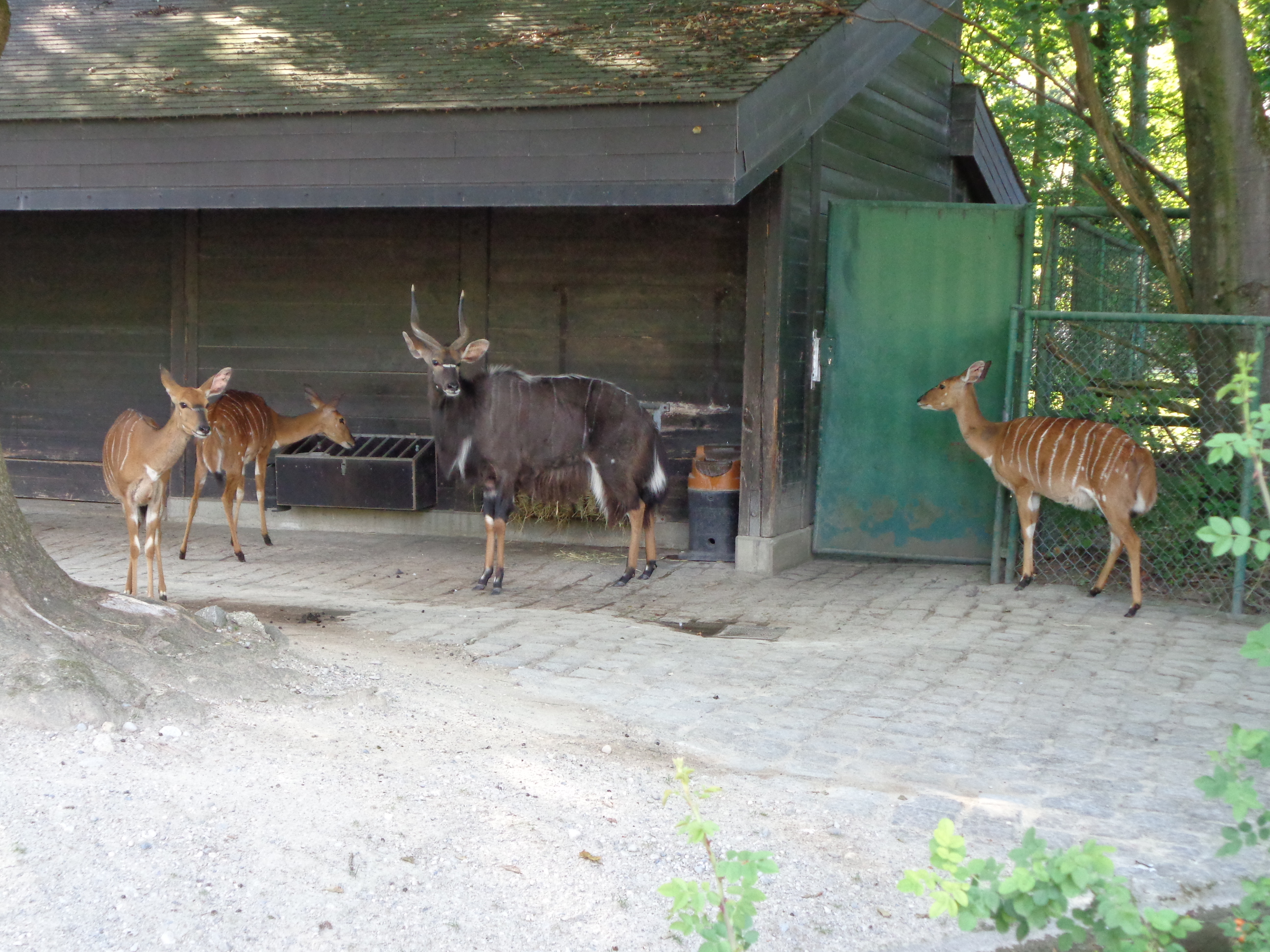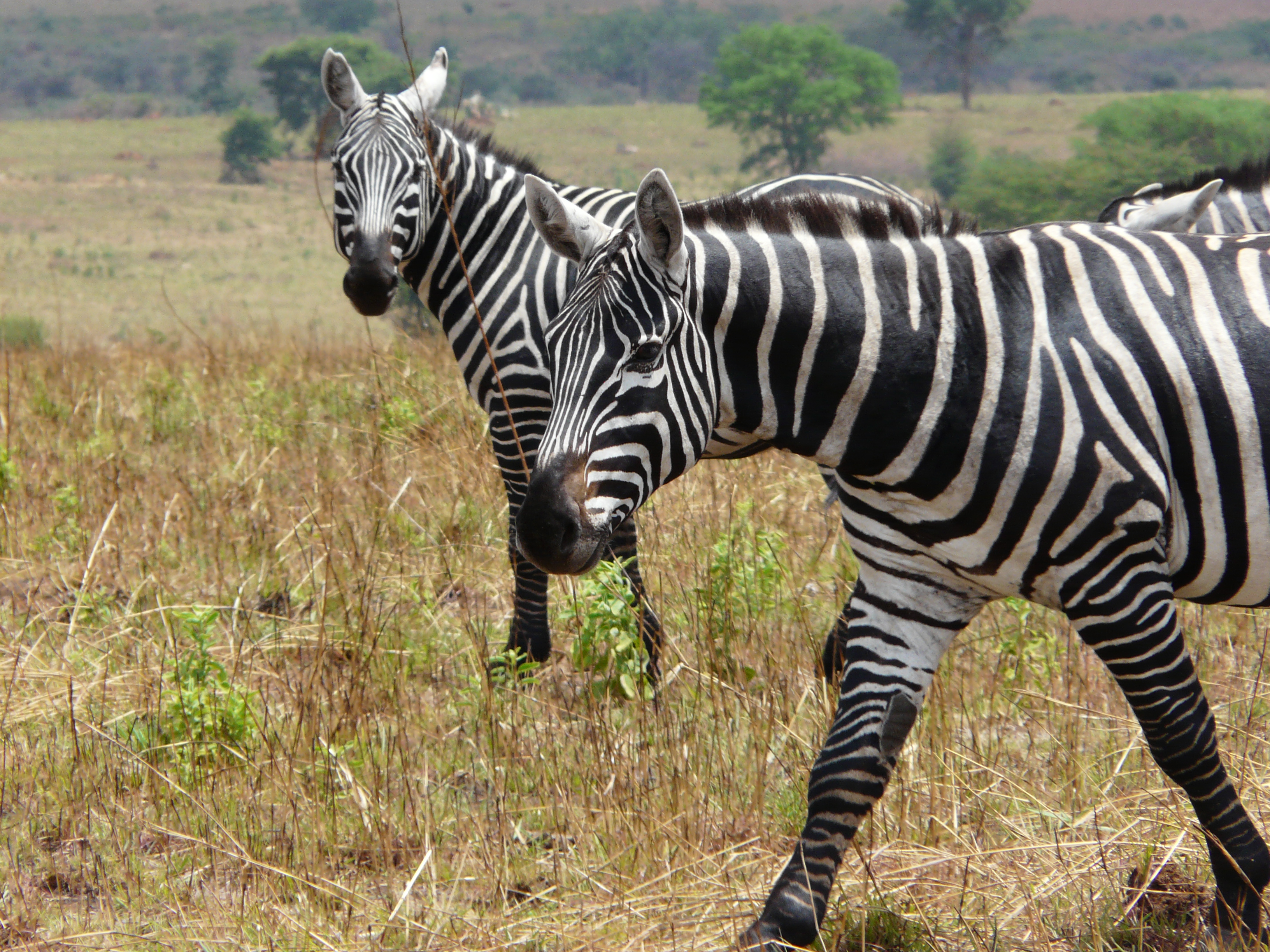|
Baton Rouge Zoo
The Baton Rouge Zoo is located 15 minutes north of downtown Baton Rouge, Louisiana, United States. The zoo is owned and operated by the Recreation and Park Commission of East Baton Rouge Parish, Louisiana (BREC), and is home to over 800 animals from around the world. The zoo was first accredited by the Association of Zoos and Aquariums (AZA) in 1977 — the first zoo in Louisiana to be accredited. However, the zoo lost its accreditation in March 2018 due to infrastructure issues and animal escapes. History A local WAFB TV personality by the name of "Buckskin" Bill ended his popular children's program in the 1950s and 1960s by saying "Baton Rouge needs a zoo." He helped rally the Baton Rouge community into supporting the zoo not only in passing the millage election to fund it but also in running a penny drive that raised over 600,000 pennies to purchase the zoo's first two elephants, Penny and Penny Two. The zoo first opened to the public on Easter Sunday, 1970. In 2013, the zo ... [...More Info...] [...Related Items...] OR: [Wikipedia] [Google] [Baidu] |
Baton Rouge, Louisiana
Baton Rouge ( ; ) is a city in and the capital of the U.S. state of Louisiana. Located the eastern bank of the Mississippi River, it is the parish seat of East Baton Rouge Parish, Louisiana's most populous parish—the equivalent of counties in other U.S. states. Since 2020, it has been the 99th-most-populous city in the United States and the second-largest city in Louisiana, after New Orleans; Baton Rouge is the 18th-most-populous state capital. According to the 2020 United States census, the city-proper had a population of 227,470; its consolidated population was 456,781 in 2020. The city is the center of the Greater Baton Rouge area—Louisiana's second-largest metropolitan area—with a population of 870,569 as of 2020, up from 802,484 in 2010. The Baton Rouge area owes its historical importance to its strategic site upon the Istrouma Bluff, the first natural bluff upriver from the Mississippi River Delta at the Gulf of Mexico. This allowed development of a business qu ... [...More Info...] [...Related Items...] OR: [Wikipedia] [Google] [Baidu] |
Chilean Flamingo
The Chilean flamingo (''Phoenicopterus chilensis'') is a species of large flamingo at closely related to the American flamingo and the greater flamingo, with which it was sometimes considered conspecific. The species is listed as near threatened by the IUCN. It breeds in South America from Ecuador and Peru to Chile and Argentina and east to Brazil; it has been introduced into the Netherlands. Like all flamingos, it lays a single chalky-white egg on a mud mound. These flamingos are mainly restricted to salt lagoons and soda lakes but these areas are vulnerable to habitat loss and water pollution. Description The plumage is pinker than the slightly larger greater flamingo, but less so than the Caribbean flamingo. It can be differentiated from these species by its grayish legs with pink joints ( tibiotarsal articulation), and also by the larger amount of black on the bill (more than half). Young chicks may have no sign of pink coloring whatsoever, but instead remain gray or p ... [...More Info...] [...Related Items...] OR: [Wikipedia] [Google] [Baidu] |
Red River Hog
The red river hog (''Potamochoerus porcus'') or bushpig (a named also used for the '' Potamochoerus larvatus''), is a wild member of the pig family living in Africa, with most of its distribution in the Guinean and Congolian forests. It is rarely seen away from rainforests, and generally prefers areas near rivers or swamps.Kingdon, J. (1997). ''The Kingdon Guide to African Mammals.'' Academic Press Limited, London. Description The red river hog has striking orange to reddish-brown fur, with black legs and a tufted white stripe along the spine. Adults have white markings around the eyes and on the cheeks and jaws; the rest of the muzzle and face are a contrasting black. The fur on the jaw and the flanks is longer than that on the body, with the males having especially prominent facial whiskers. Unlike other species of pig native to tropical Africa, the entire body is covered in hair, with no bare skin visible. Adults weigh and stand tall, with a length of . The thin tail i ... [...More Info...] [...Related Items...] OR: [Wikipedia] [Google] [Baidu] |
Eastern Black-and-white Colobus
The mantled guereza (''Colobus guereza''), also known simply as the guereza, the eastern black-and-white colobus, or the Abyssinian black-and-white colobus, is a black-and-white colobus, a type of Old World monkey. It is native to much of west central and east Africa, including Cameroon, Equatorial Guinea, Nigeria, Ethiopia, Kenya, Tanzania, Uganda and Chad. The species consists of several subspecies that differ in appearance. It has a distinctive appearance, which is alluded to in its name; the long white fringes of hair that run along each side of its black Trunk (anatomy), trunk are known as a mantle. Its face is framed with white hair and it has a large white tail tuft. The mantled guereza is Diurnality, diurnal and Arboreal locomotion, arboreal, found in both deciduous and evergreen forests. It is an adaptable species that can cope with habitat disturbance and prefers secondary forest close to rivers or lakes. Although previously thought only to eat leaves, it also eats see ... [...More Info...] [...Related Items...] OR: [Wikipedia] [Google] [Baidu] |
Pygmy Hippopotamus
The pygmy hippopotamus or pygmy hippo (''Choeropsis liberiensis'') is a small hippopotamid which is native to the forests and swamps of West Africa, primarily in Liberia, with small populations in Sierra Leone, Guinea, and Ivory Coast. It has been extirpated from Nigeria. The pygmy hippo is reclusive and nocturnal. It is one of only two extant species in the family Hippopotamidae, the other being its much larger relative, the common hippopotamus (''Hippopotamus amphibius'') or Nile hippopotamus. The pygmy hippopotamus displays many terrestrial adaptations, but like the hippo, it is semiaquatic and relies on water to keep its skin moist and its body temperature cool. Behaviors such as mating and giving birth may occur in water or on land. The pygmy hippo is herbivorous, feeding on ferns, broad-leaved plants, grasses, and fruits it finds in the forests. A rare nocturnal forest creature, the pygmy hippopotamus is a difficult animal to study in the wild. Pygmy hippos were unknown ou ... [...More Info...] [...Related Items...] OR: [Wikipedia] [Google] [Baidu] |
Bongo (antelope)
The bongo (''Tragelaphus eurycerus'') is a herbivorous, mostly nocturnal forest ungulate. Bongos are characterised by a striking reddish-brown coat, black and white markings, white-yellow stripes and long slightly spiralled horns. They are the only tragelaphid in which both sexes have horns. They have a complex social interaction and are found in African dense forest mosaics. Native to Africa, they are the third-largest antelope in the world. The western or lowland bongo, ''T. e. eurycerus'', faces an ongoing population decline, and the IUCN Antelope Specialist Group considers it to be Near Threatened on the conservation status scale. The eastern or mountain bongo, ''T. e. isaaci'', of Kenya, has a coat even more vibrant than that of ''T. e. eurycerus''. The mountain bongo is only found in the wild in a few mountain regions of central Kenya. This bongo is classified by the IUCN Antelope Specialist Group as Critically Endangered, with fewer individuals in the wild than in c ... [...More Info...] [...Related Items...] OR: [Wikipedia] [Google] [Baidu] |
Sable Antelope
The sable antelope (''Hippotragus niger'') is an antelope which inhabits wooded savanna in East and Southern Africa, from the south of Kenya to South Africa, with a separate population in Angola. Taxonomy The sable antelope shares the genus ''Hippotragus'' with the extinct bluebuck (''H. leucophaeus'') and the roan antelope (''H. equinus''), and is a member of the family Bovidae. In 1996, an analysis of mitochondrial DNA extracted from a mounted specimen of the bluebuck showed that it is outside the clade containing the roan and sable antelopes. The cladogram below shows the position of the sable antelope among its relatives, following the 1996 analysis: Subspecies ''Hipotragus niger'' has four subspecies: * The southern sable antelope (''H. n. niger''; also known as the common sable antelope, black sable antelope, Matsetsi sable antelope or South Zambian sable antelope) is regarded as the nominate subspecies, as it was the first one to be described and named in 1838. Often ... [...More Info...] [...Related Items...] OR: [Wikipedia] [Google] [Baidu] |
Nyala
The lowland nyala or simply nyala (''Tragelaphus angasii'') is a spiral-horned antelope native to southern Africa. It is a species of the family Bovidae and genus ''Tragelaphus'', previously placed in genus ''Nyala''. It was first described in 1849 by George French Angas. The body length is , and it weighs . The coat is maroon or rufous brown in females and juveniles, but grows a dark brown or slate grey, often tinged with blue, in adult males. Females and young males have ten or more white stripes on their sides. Only males have horns, long and yellow-tipped. It exhibits the highest sexual dimorphism among the spiral-horned antelopes. It is not to be confused with the endangered mountain nyala living in the Bale region of Ethiopia). The nyala is mainly active in the early morning and the late afternoon. It generally browses during the day if temperatures are and during the night in the rainy season. As a herbivore, the nyala feeds upon foliage, fruits and grasses, and requir ... [...More Info...] [...Related Items...] OR: [Wikipedia] [Google] [Baidu] |
Thomson's Gazelle
Thomson's gazelle (''Eudorcas thomsonii'') is one of the best known species of gazelles. It is named after explorer Joseph Thomson and is sometimes referred to as a "tommie". It is considered by some to be a subspecies of the red-fronted gazelle and was formerly considered a member of the genus ''Gazella'' within the subgenus ''Eudorcas'', before ''Eudorcas'' was elevated to genus status. Thomson's gazelles can be found in numbers exceeding 200,000 in Africa and are recognized as the most common type of gazelle in East Africa. A small fast antelope, the Thomson's gazelle is claimed to have top speeds up to . It is the fourth-fastest land animal, after the cheetah (its main predator), pronghorn, and springbok. Taxonomy and etymology The current scientific name of Thomson's gazelle is ''Eudorcas thomsonii''. It is a member of the genus ''Eudorcas'' and is classified under the family Bovidae. Thomson's gazelle was first described by British zoologist Albert Günther in 1884. The rel ... [...More Info...] [...Related Items...] OR: [Wikipedia] [Google] [Baidu] |
Plains Zebra
The plains zebra (''Equus quagga'', formerly ''Equus burchellii''), also known as the common zebra, is the most common and geographically widespread species of zebra. Its range is fragmented, but spans much of southern and eastern Africa south of the Sahara. Six or seven subspecies have been recognised, including the extinct quagga which was thought to be a separate species. More recent research supports variations in zebra populations being Cline (biology), clines rather than subspecies. The plains zebra is intermediate in size between the larger Grévy's zebra and the smaller mountain zebra and tends to have broader stripes than both. Great variation in coat patterns exists between clines and individuals. The plain zebra's habitat is generally, but not exclusively, treeless grasslands and savanna woodlands, both tropical and temperate. They generally avoid desert, dense rainforest and permanent wetlands. Zebras are preyed upon by lions and spotted hyenas, Nile crocodiles and, to ... [...More Info...] [...Related Items...] OR: [Wikipedia] [Google] [Baidu] |
Reticulated Giraffe
The reticulated giraffe (''Giraffa camelopardalis reticulata'' or ''G. reticulata''), also known as the Somali giraffe, is a subspecies or species of giraffe native to the Horn of Africa. It lives in Somalia, southern Ethiopia, and northern Kenya.Rare white giraffes spotted in Kenya conservation area . Naaman Zhou, , 14 September 2017. Accessed 14 September 2017. There are approximately 8,500 individuals living in the wild. Reticulated giraffes can interbreed with other giraffe species in captivity or if they come into contact with populations of other species in the wild ... [...More Info...] [...Related Items...] OR: [Wikipedia] [Google] [Baidu] |
Eastern Black Rhinoceros
The eastern black rhinoceros (''Diceros bicornis michaeli''), also known as the East African black rhinoceros, is a subspecies of the black rhinoceros. Its numbers are very low due to poaching for its horn, and it is listed as critically endangered. Description The eastern black rhino is distinguishable from the southern subspecies as it has a longer, leaner, and more curved horn. Its skin is also very grooved. ''Diceros bicornis michaeli'' is also reportedly more aggressive than the other three subspecies of black rhino. They are browsers and are usually found in highland forest and savanna habitat. Population and threats Once located in Ethiopia, Somalia, Tanzania and Kenya, as of 2017 they can only be found in Kenya (594 animals), Rwanda and in northern Tanzania (80 animals). A population of currently 60 animals is kept outside its natural range in South Africa (Addo Elephant National Park). The population has declined 90% in the last three generations. In 2010 their tot ... [...More Info...] [...Related Items...] OR: [Wikipedia] [Google] [Baidu] |

.jpg)


_Gazella_isabella_(white_background).png)

